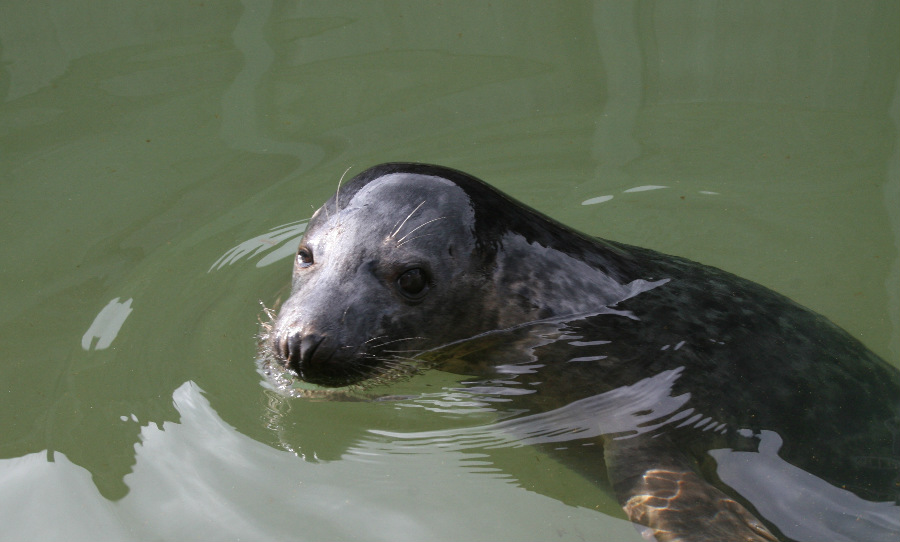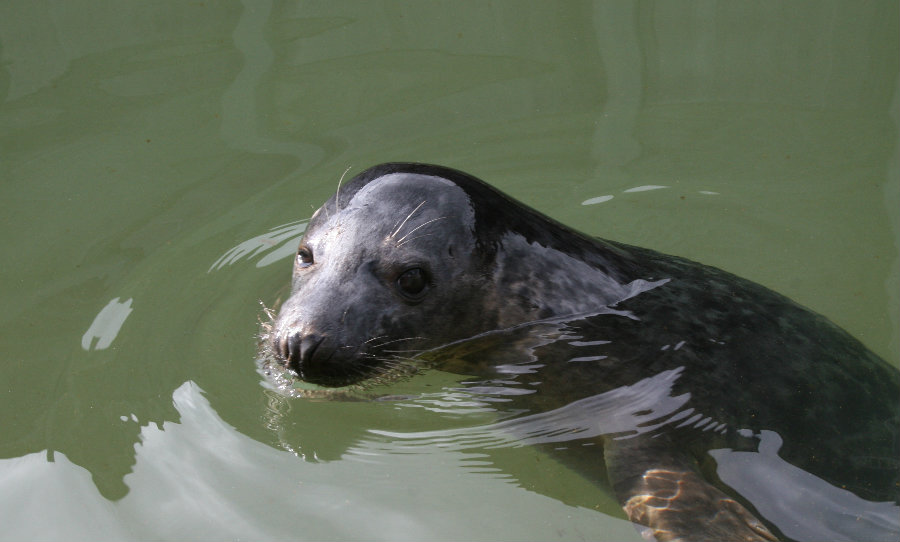Researchers at Scotland’s University of St. Andrews have taught a grey seal to sing the first notes of the Star Wars theme song and Twinkle Twinkle Little Star.
Amanda Stansbury did the research on seals’ ability to imitate sounds as part of her PhD under Vincent Janik, the director of the Scottish Oceans Institute.

Researchers from the University of St. Andrews in Scotland are aiming to learn new ways to treat speech disorders by studying a grey seal’s ability to learn human melodies.
Amanda Stansbury worked with three juvenile grey seals – Zola, Janice, and Gandalf – in her study into seals’ ability to imitate sounds and learn melodies.
“What’s new about this research is we taught the seals how to imitate new sounds,” Stansbury said. “We could have played them any song or any combination of notes.”
To teach the seals, Stansbury first recorded the seals making their natural sounds. Then she played those sounds back to the seals for them to imitate. Next, she used a computer to make small adjustments to the sounds, making the tones higher, and rewarding the seals for matching those new sounds.
“The seals learned that, hey, if I make the same noise back, I’m going to get a fish,” Stansbury explained.
Later, the different notes were strung together to create a melody similar to the Star Wars theme and Twinkle Twinkle Little Star. These sounds were familiar to the seals, making it easier for them to imitate than if a human were to sing them the tune.
In a video released by the university, a grey seal named Zola hears the first seven notes of the Star Wars theme played by a computer and then barks the tune back, stretching the last two notes.
According to Stansbury, other animals like birds and dolphins are also capable of vocal learning, but seals are unique because they have vocal chords. There is potential for this kind of research to give some more insight into how mammals learn sounds, bringing new approaches to human speech therapy.
Stansbury stated that she would have tried to teach the seals longer melodies if she had a longer time period to work with the pups, but it was necessary that they were released back into the wild after a year of research.
“We haven’t fully studied the full extent and maybe how complex of melodies these guys would be capable of learning,” she said.



